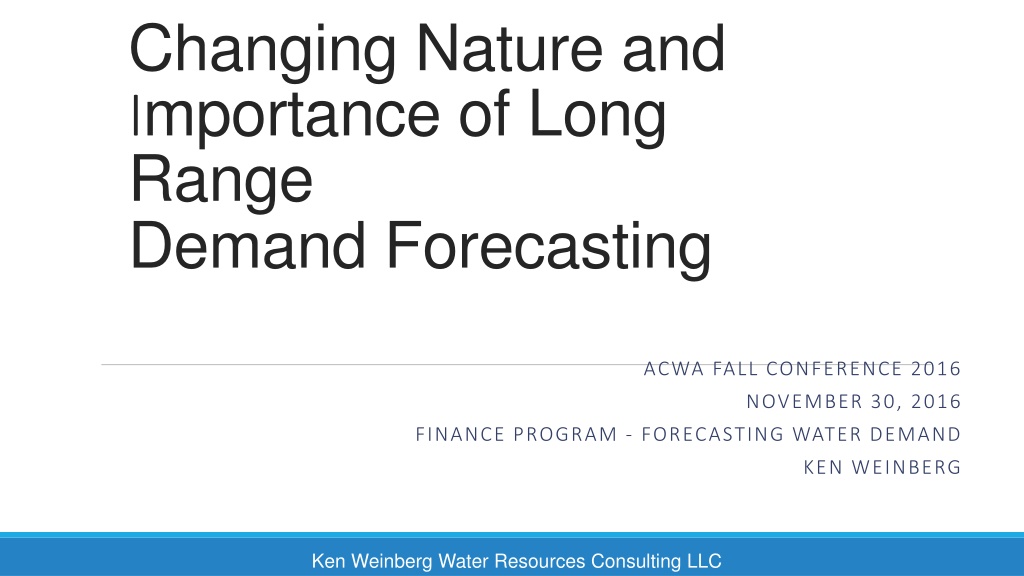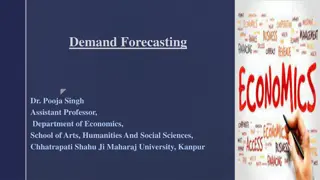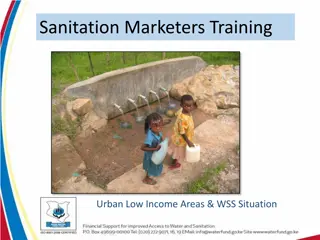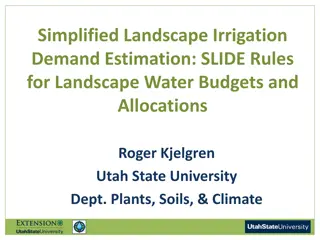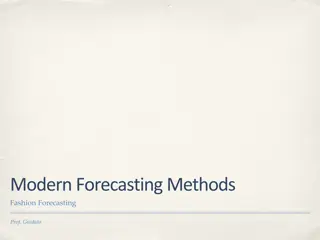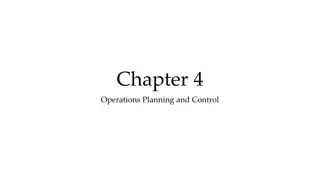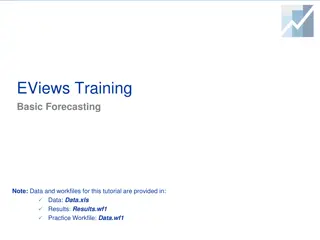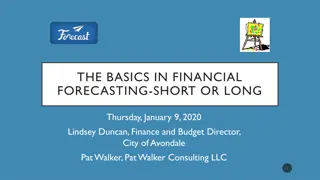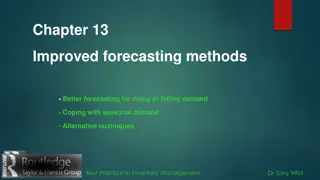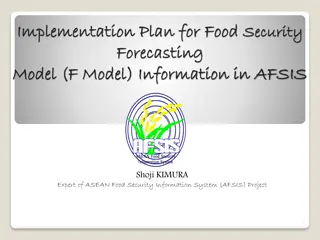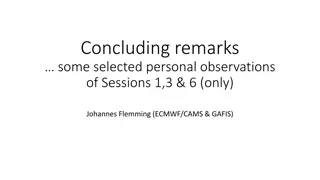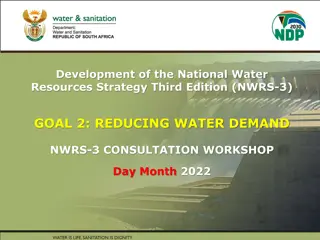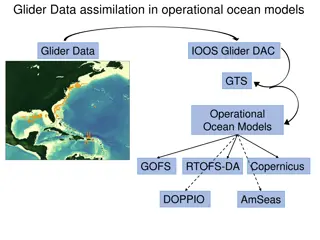Evolution of Long-Range Water Demand Forecasting in Urban Areas
Explore the shifting landscape of water demand forecasting, from the foundation of key planning documents to the evolving nature driven by population growth, legislation, and advanced tools. Discover the importance of aligning short-term and long-term forecasts for efficient urban water management.
Download Presentation

Please find below an Image/Link to download the presentation.
The content on the website is provided AS IS for your information and personal use only. It may not be sold, licensed, or shared on other websites without obtaining consent from the author. Download presentation by click this link. If you encounter any issues during the download, it is possible that the publisher has removed the file from their server.
E N D
Presentation Transcript
Changing Nature and Importance of Long Range Demand Forecasting ACWA FALL CONFERENCE 2016 NOVEMBER 30, 2016 FINANCE PROGRAM - FORECASTING WATER DEMAND KEN WEINBERG Ken Weinberg Water Resources Consulting LLC
Demand Forecasting is the Foundation Demand Forecasting is the Foundation of Key Planning Documents of Key Planning Documents
Types of Demand Forecasting Types of Demand Forecasting Aligning Short Term and Long Term Forecast Short Term Sales Forecast Budgetary and water rates Operational Long Range Demand Forecast Quantifying supply need Long range capital planning and financing CEQA Compliance: Purpose and Need Developing nexus for growth charges (Capacity Charges) 8 6 Long Term 4 Short Term Hopefully, both forecasts align 2 0 2000 2010 2015 2020 2025
Evolving Nature of Urban Water Demand Forecasting Evolving Nature of Urban Water Demand Forecasting Escalation of Water Use and Population Increase water use by some annual percentage How many more people and how much more water will they use Econometric and Land Use Based Forecast Demographic forecasting became more sophisticated Competitive funding drove need for better forecasting of capital investments ACOE IWR MAIN became the cutting edge forecasting tool In California external factors drove the use of more sophisticated demand forecasting
Key Legislation Requiring Water Key Legislation Requiring Water Demand Forecasting Demand Forecasting 1983: Urban Water Management Plan Act Required urban suppliers serving 3,000 AF or 3,000 connections to prepare a plan every 5 years Amended 20 times since passage to require better planning 1983: AB 1600 Mitigation Fee Act Growths fair share requires quantifiable nexus 2001: SB 610 and SB 221 Required water suppliers to prepare water availability assessments and verifications for land use agencies in land use approval process
Key Legislation Requiring Water Key Legislation Requiring Water Demand Forecasting Demand Forecasting 2009: SBx7-7 State mandate for retail agencies to reduce consumption 20% by 2020 Achieved through conservation savings and recycled water project development Post 2016 : SWRCB/DWR Conservation Regs Drought Experience driving more ambitious conservation goals SBx7-7 goals now considered too easy
Land-Use and Water Supply Coordination in the San Diego Region Cities/County General Plans SANDAG s Regional Growth Forecast Projected Water Demands Urban Water Management Plan Water Assessment (SB 610) Written Verification (SB 221) Cities/County Plans & Policies SANDAG Regional Plan
Driver Variables Driver Variables Most important factors affecting forecasted Most important factors affecting forecasted water use water use Derive from long range demographic and economic forecasts Relies on past patterns of water use to predict future water use Econometric & Land Use Based Demand Forecast Econometric & Land Use Based Demand Forecast Links to regional land use planning and demographic forecasts Housing, employment, household income, weather, cost of water
Projected San Diego County Employment Growth Projected San Diego County Employment Growth SANDAG Series 13 Growth Forecast Total Estimated Jobs (Millions) 2.0 1.5 32% increase in jobs 460,000 new jobs 1.45 million in 2012 to 1.91 million by 2050 1.0 0.5 Contributing factor to increased water consumption 0.0 2012 2020 2035 Civilian Jobs 2050 Military Jobs
Based on SANDAG Forecast Population Million o Series 13 projections 4.0 Projected o Includes 2010 Census counts 3.5 Additional 2/3 million people between 2015 and 2040 Total service area population roughly 3.8 million by 2040 3.0 2.5 Historic 2.0 1.5 In-region births over deaths account for 2/3 of population growth 1.0 1980 1990 2000 2010 2020 2030 2040
SBX7 SBX7- -7 : The Math Gets Easier or 7 : The Math Gets Easier or Mandated Water Use Mandated Water Use Demand = ((GPCD Target X Estimated Future Population) * 365 days) Conservation = Econometric or Land Use Forecast - ((gpcd target X Future Population) X 365 days)
Determining Projected Total Demands Determining Projected Total Demands (Illustrative Purposes) 900 800 Total Demand 700 600 500 2020 2025 2030 2035 2040 Baseline Demand Forecast Projected Demand with Conservation 12 12
Questions To Consider Questions To Consider 1. What is the value of sophisticated demand forecasting using hypothetical historic water use data when total use will be mandated? 2. If facilities are sized to meet mandated use what happens if it is not achieved? 3. What is the effect on capacity charges if future use goes down or is stable, what is growth s fair share?
